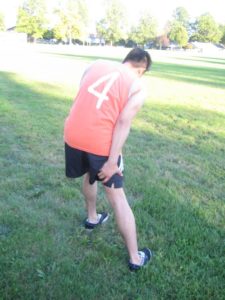Spondylolisthesis is a condition where one of the spinal bones slips out of place onto the vertebra beneath it. In case it slips excessively, the bone might crush a nerve, resulting to pain. Generally, the bones of the lower back are affected.
The condition is the usual cause of back pain among teenagers. The symptoms often start during the growth spurt during adolescence. The degenerative form arises most often after the age of 40.
What are the indications?

Many individuals with spondylolisthesis do not have any symptoms and not even aware that they have the condition. Once the symptoms arise, low back pain is the most common. This pain generally radiates throughout the lower back and might feel like a muscle strain.
Spondylolisthesis can also trigger muscle contractions in the hamstring in the back part of the thigh region. The taut hamstrings causes the individual to walk on short strides with the knees slightly bent. In case a slipped vertebra is crushing a nerve, the pain might radiate down the leg up to the foot. In addition, the foot might tingle and/or feel numb.
What are the possible complications?
Continuous pain linked with spondylolisthesis can lead to diminished mobility and inactivity. It is important to note that inactivity can result to weight gain, bone density loss as well as diminished muscular strength and flexibility in other body parts.
There is also a risk for lasting nerve damage if the slipped vertebra is crushing on a spinal nerve root.
What is the outlook?
The possibility of having recurring pain is based on the severity of spondylolisthesis. For a minor slip where the bone is not crushing on any nerves, the individual might not experience any recurrence of back pain linked to the condition.
Generally, conservative treatment for mild cases of spondylolisthesis is successful in around 80% of cases. Surgical intervention is effective in alleviating the symptoms in around 85-90% of individuals with severe spondylolisthesis.
Prevention
Even though spondylolisthesis could not be prevented, there are measures that must be taken to lower the risk for slips such as:
- Keeping the back and abdominal muscles durable to support and steady the lower back.
- Maintain a healthy weight since having excess only strains on the lower back
- Select activities and sports are at low risk for lower back injury.
- Eat a well-balanced diet to ensure that the bones are properly nourished and strong
